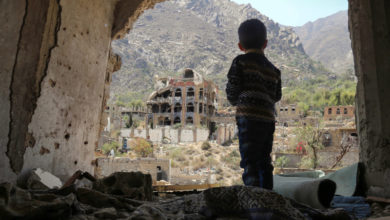Clashes reported on first day of Afghan truce

The United States and the Taliban are closing in on a deal to end the two-decade-long war after the seven-day truce started on Saturday in Afghanistan.
Day one into the week-long “reduction in violence” period, Taliban fighters and Afghan security forces clashed in parts of Afghanistan on Saturday, but the incidents did not spark immediate alarm on either side.
If the violence reduction period is observed successfully, the United States and the Taliban will sign an agreement on February 29 that could lead to a pullout of thousands of U.S. troops after employment for nearly two decades in the country.
Taliban fighters attacked Afghan forces in Balkh province in the early hours of Saturday, according to the spokesman for the provincial police and head of the provincial council. There were no immediate details on the casualties in the clashes.
The attack was confirmed by Taliban spokesman Zabihullah Mujahid in an audio message to Reuters. He said an Afghan forces convoy tried to enter territory controlled by the group.
The two sides have fought for control over parts of Balkh province for years.
The Taliban spokesman also confirmed similar clashes in other parts of the country, adding that the violence reduction understanding covered specific actions and areas and all those incidents of firing should not be considered a violation of the understanding, which, he stressed, was “not a ceasefire.”
Meanwhile, speaking to journalists on Saturday morning, U.S. General Austin Scott Miller, who commands U.S. forces and the NATO-led non-combat Resolution Support Mission in Afghanistan, addressed the issue of what would constitute a breach of the understanding.
The reduction of violence is a “conditional effort; it’s a trial period” to see if all sides including the Taliban are able to meet their obligations, Miller said standing alongside Afghan defense and interior ministers.
“Our operations are defensive at this point,” he added. “We stopped our offensive operations as part of our obligations, but we remain committed to defend our forces as well as defending Afghan security forces.”
Previous attempts at negotiating peace agreements have been scuttled by Taliban attacks on international forces, most recently in December last year when an attack on a U.S. military base put talks on hold.
One militant could threaten the peace process
Hopes for ending America’s longest war hinge on maintaining a week-long fragile truce in Afghanistan that U.S. officials and experts agree will be difficult to assess and fraught with pitfalls.
If one militant with a suicide vest kills dozens in a Kabul market, or a U.S. airstrike targeting Islamic State insurgents takes out Taliban members instead, it could potentially blow the peace deal.
The only other “ceasefire” the Taliban had agreed to was for three days in 2018 over the Islamic holiday of Eid al-Fitr. Then fighting ceased completely and Taliban and Afghan security forces were even filmed taking selfies together and laughing. The Taliban military leaders chastised its fighters at the end of the ceasefire for their frolicking with the enemy.
In a country that has been wracked by violence for more than 18 years, determining if the agreement has been violated will be a tough task. And there are a number of other groups and elements in the country that would love to see the deal fall through.
“The reason this is a challenge is this is a very decentralized insurgency,” said Seth Jones, a senior adviser at the Center for Strategic and International Studies and an Afghanistan expert. “There are going to be a lot of opportunities for any militia commander, element of the Taliban, the Haqqani network, and other local forces who don’t want to see a deal, to conduct violence.”
The U.S. will continue to have surveillance aircraft and other assets overhead to monitor events and help to determine who is responsible for any attack.
Jones said the U.S. military has tried to get a good layout of where all the insurgent groups are operating so it will be able to determine where any attack comes from and who likely was responsible. And U.S. military officials said they were prepared and ready to make quick assessments.
Source: CGTN





